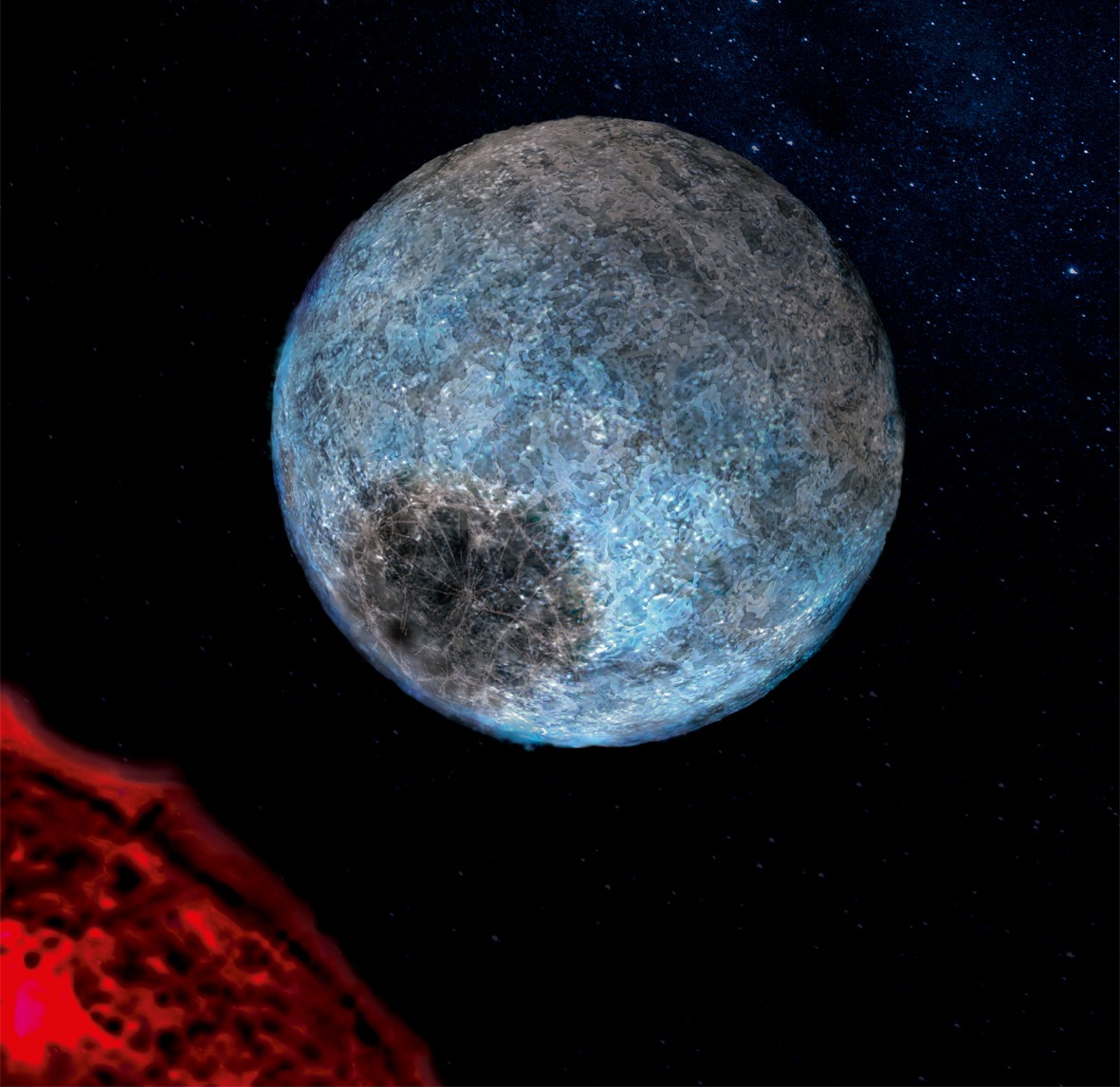Study reveals that water worlds may be more common than expected
The Institute of Astrophysics of Andalusia (IAA-CSIC) leads a study that finds evidence for the existence of abundant extrasolar planets composed of ice and rock around dwarf stars
Water is the essential element for life on Earth, and the water cycle helps keep our planet's climate stable and benevolent. Thus, in the search for life in our galaxy, planets with liquid water on their surfaces are among the ideal candidates. A new study, published today in Science, suggests that many of the planets known as super-Earths or mini-Neptunes may harbour large amounts of water, with compositions of up to 50% rock and 50% water (by comparison, Earth is composed of only 0.02% water). But this water is likely to be found beneath the crust, rather than flowing across the surface in the form of oceans or rivers.
Thanks to advances in observational instruments, the discovery of planets in other solar systems is increasing by leaps and bounds. And more well-characterised planets make it possible to identify demographic patterns, just as observing the population of an entire city can reveal trends that are difficult to detect on an individual level.
The newly published study analyses all planets detected in M dwarf stars, a type of star less massive than the Sun and the most abundant in our Milky Way galaxy. "It was a surprise to discover evidence of so many water worlds orbiting the most common type of star in the galaxy", says Rafael Luque, a researcher at the Institute of Astrophysics of Andalusia (IAA-CSIC) and the University of Chicago who leads the study. "It has huge implications for the search for habitable planets”.

IN SEARCH OF WATER WORLDS
The discoveries of planets around M dwarfs are numerous, but they are indirect findings, made by studying the effects of planets on their stars: either by analysing the dimming that occurs when the planet passes in front of its star, or by studying the small gravitational pull that the planet exerts on the star as it rotates around it.
“Each of the two different ways of discovering planets gives you complementary information. By capturing the decrease in brightness produced when a planet crosses in front of its star, we can determine the planet's diameter, and by measuring the minute gravitational attraction that a planet exerts on a star, we can calculate its mass", points out Enric Pallé, a researcher at the Institute of Astrophysics of the Canary Islands and the University of La Laguna and co-author of the work.
By combining diameter and mass, the composition of the planet can be measured, and it can be determined whether it is, for example, a gas giant planet like Jupiter or a small, dense, rocky planet like Earth. By studying a population of forty-three planets, a surprising picture emerged: the low density of a large percentage of the planets suggests that these planets are probably half rock and half water.
Although the first thought that might come to mind when looking at these proportions would point to large oceans, these planets are so close to their suns that if there were water on the surface it would be in a supercritical gas phase, which would increase its radius. "But that's not what we see in the samples, which suggests that the water is not in the form of a surface ocean", explains Rafael Luque, who carried out much of the study during his thesis at the Institute of Astrophysics of the Canary Islands.
The finding contradicts the widespread idea that these worlds are either dry and rocky or have an extensive and tenuous atmosphere of hydrogen, helium, or both. Instead, these worlds fall neatly into two families: rocky or watery. This scenario reinforces one of the most widely accepted theories of planetary formation, which suggests that rocky worlds form in the inner parts of their solar systems, while water worlds form in the outermost regions and then migrate inwards over time.
While the evidence is compelling, the next step is to obtain irrefutable proof that these planets are water worlds, which is expected to be achieved with NASA's recently launched JWST, the successor to the Hubble Space Telescope.
R. Luque, P. Pallé. "Density, not radius, separates rocky and water-rich small planets orbiting M dwarf stars". Science, September 2022. DOI: 10.1126/science.abl7164
Instituto de Astrofísica de Andalucía (IAA-CSIC)
Unidad de Divulgación y Comunicación
Silbia López de Lacalle - sll[arroba]iaa.es - 958230676
https://www.iaa.csic.es
https://divulgacion.iaa.csic.es

